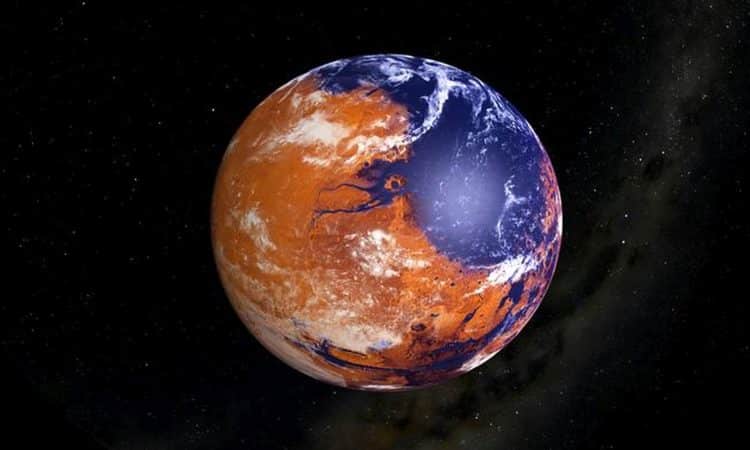
NASA’s Curiosity rover, currently exploring Gale Crater on Mars, is providing new details about how the ancient Martian climate transitioned from an environment potentially suitable for life – with evidence of widespread liquid water on the surface – to a surface that is inhospitable to terrestrial life as we know it.
Although the surface of Mars is frigid and hostile to life today, NASA’s robotic explorers on Mars are looking for clues as to whether it could have supported life in the distant past.
Researchers used instruments on board Curiosity to measure the isotopic composition of carbon-rich minerals found in Gale Crater and discovered new information about how it transformed
“The isotopic values of these carbonates indicate some extreme amounts of evaporation, suggesting that these carbonates likely formed in a climate that could only support transient liquid water,” said David Burtt of NASA’s Goddard Space Flight Center in Greenbelt, Maryland, and lead author of the study, published in
“Our evidence is not consistent with an ancient environment with life on the surface of Mars, although this does not rule out the possibility of a subsurface biosphere or a surface biosphere that began and ended before these carbonates formed.”
An underground or surface biosphere
Isotopes are versions of an element with different masses. As the water evaporated, the light versions of carbon and oxygen were more likely to escape into the atmosphere, while the heavy versions were left behind more often, accumulating in greater abundances and, in this case, being incorporated finally in carbonate rocks.
Scientists are interested in carbonates because of their proven ability to act as climate records. These minerals can retain signatures of the environment in which they formed, including the temperature and acidity of the water, as well as the composition of the water and atmosphere, he writes.
The paper proposes two formation mechanisms for the carbonates discovered at Gale. In the first scenario, carbonates form through a series of wet-dry cycles in Gale Crater. In the second, carbonates form in very salty water under cold ice-forming conditions in Gale Crater.
These minerals can preserve environmental signatures
“These formation mechanisms represent two different climate regimes that may present different habitability scenarios,” said Jennifer Stern of NASA Goddard, co-author of the paper. “Wet-dry cycles would indicate an alternation between more habitable and less habitable environments, while mid-latitude cryogenic temperatures would indicate a less habitable environment where most of the water is locked in ice and unavailable to chemistry or biology, and what there is is extremely salty and unpleasant for life.”
These climate scenarios have previously been proposed based on the presence of certain minerals, global-scale modeling and the identification of rock formations. This result is the first to add isotopic evidence from rock samples to support the scenarios.
Heavy isotope values in Martian carbonates are significantly higher than those observed on Earth for carbonate minerals, and are the heaviest carbon and oxygen isotope values recorded for any Martian material. In fact, according to the team, both wet-dry and cold-salty climates are required to form carbonates so rich in carbon and heavy oxygen.

